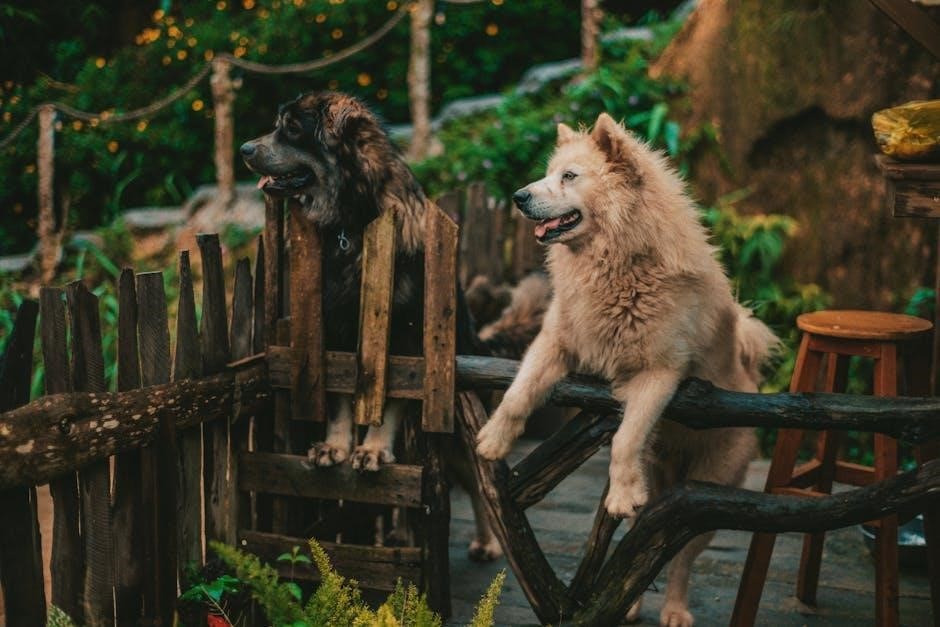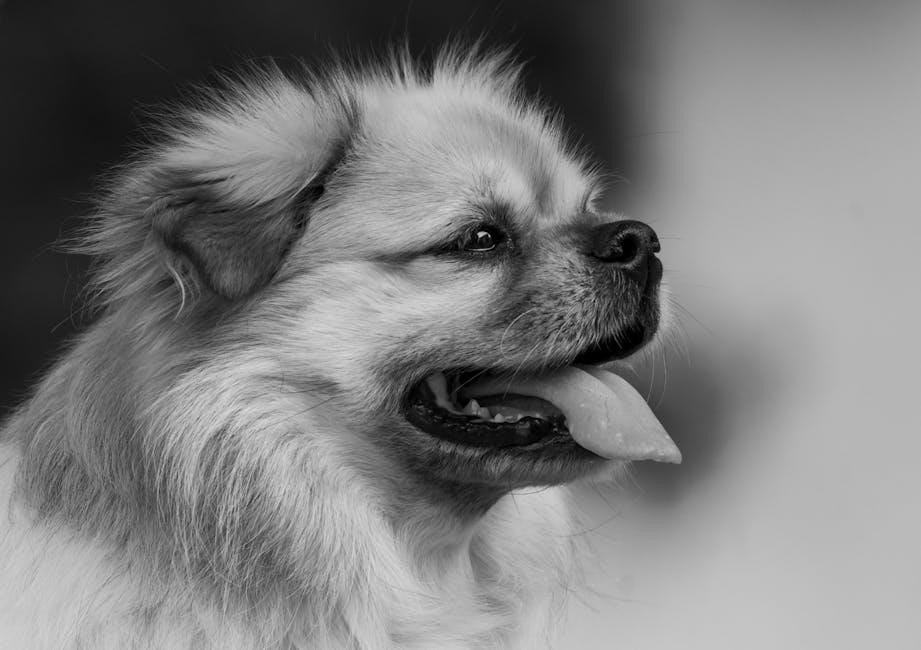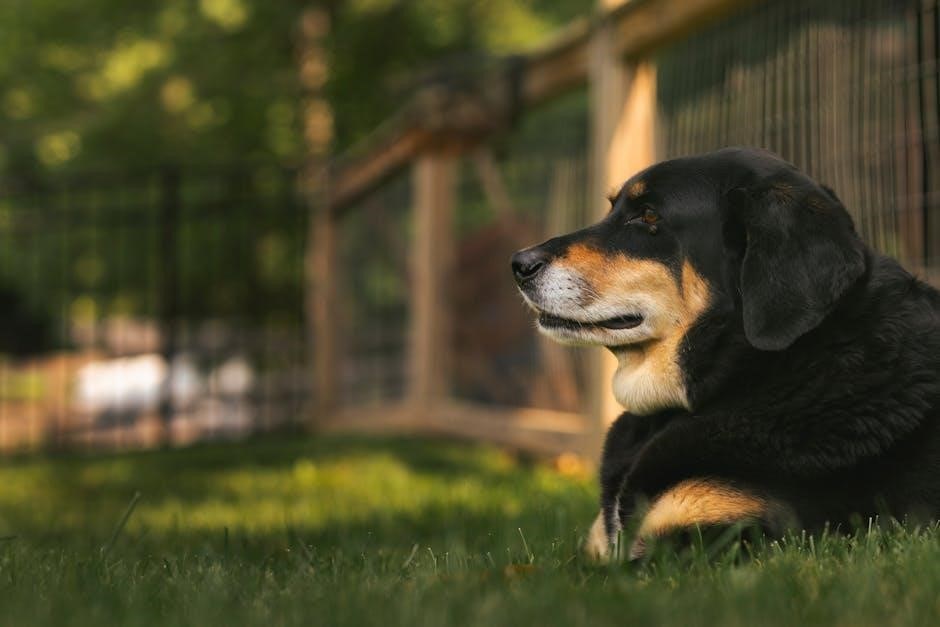pathfinder 2e animal companion guide
An animal companion is a loyal ally that enhances your character’s capabilities, offering unique traits and abilities․ This guide explores their mechanics, growth, and strategic roles in-depth․
An animal companion is a loyal and trusted ally in Pathfinder 2E, offering unique abilities and enhancing your character’s effectiveness in both combat and exploration․ These companions are typically obtained through specific classes like druids, rangers, or certain archetypes, and they grow in power alongside your character․ With traits like the animal and minion traits, they operate as extensions of your actions, providing strategic advantages․ Whether it’s a ferocious predator or a steadfast mount, animal companions bring versatility to your gameplay․ They can perform actions during your turn, leveraging their instincts and training to support you․ This guide will explore their mechanics, abilities, and how to maximize their potential, helping you forge a strong bond with your companion and elevate your adventuring experience․

Key Classes and Archetypes for Animal Companions
In Pathfinder 2E, animal companions are most commonly associated with druids and rangers, who gain them through class features; Druids often summon companions through their bond with nature, while rangers train and nurture their allies․ The Beastmaster archetype is particularly powerful, allowing characters to gain multiple companions and enhance their abilities․ Other classes, like the Champion, can also access animal companions through specific archetypes․ For instance, the Animal Speaker archetype enables characters to communicate with and command animals, while the Cavalier archetype focuses on mounted combat, treating the mount as a loyal companion․ These classes and archetypes provide unique ways to integrate animal companions into your gameplay, offering diverse strategies for combat, exploration, and storytelling․
Mechanics of Animal Companions
Animal companions are minions with specific traits, such as the animal trait and limited intelligence․ They gain 2 actions during your turn if commanded, using their natural abilities effectively․ Commanding requires the Command an Animal action, optimizing their role in combat and exploration․
Animal Companion Traits and Abilities
Animal companions possess distinct traits and abilities that define their roles in the game․ They are classified as minions with the animal trait, granting them unique interactions with spells and effects․ Base ability scores include Str 2, Dex 2, Con 1, Int -4, Wis 1, and Cha 0, reflecting their limited intelligence and specialized skills․ Companions often have natural attacks, such as bites or horns, and may possess special abilities like low-light vision or heightened senses․ Their capabilities are further enhanced through feats and archetypes, allowing for customization to suit your playstyle․ As they progress, these abilities improve, making them invaluable allies in both combat and exploration․ Properly trained, an animal companion can excel in its role, whether as a ferocious combatant or a skilled utility provider, adapting to the needs of your character and the dynamics of your party․
Commanding Your Animal Companion
Commanding your animal companion is a straightforward yet crucial mechanic in Pathfinder 2E․ Using the Command an Animal action, you direct your companion, allowing it to take two actions during your turn․ This replaces the usual Command an Animal effects, eliminating the need for a Nature check․ Handling your companion as a free action enables you to issue commands without disrupting your turn, providing tactical flexibility․ The +4 bonus to wild empathy and Handle Animal checks ensures smoother communication and training, making your companion more responsive and effective․ This system allows for seamless integration of your companion into combat and exploration, enhancing your overall strategy and party synergy without adding unnecessary complexity to the game mechanics․
Action Economy and Turn Management
Action economy is crucial in Pathfinder 2E, particularly when managing an animal companion․ Commanding your companion enables them to take two actions during your turn, significantly enhancing your tactical flexibility․ This feature allows your companion to execute multiple tasks without using your own actions, making them indispensable in both combat and exploration․ Handling your companion as a free action further streamlines turn management, enabling seamless coordination and strategic execution․ Effective use of these mechanics ensures your companion remains a powerful ally, maximizing their contributions without complicating gameplay․ Properly managing actions enhances synergy, making you and your companion a formidable team, capable of executing complex strategies efficiently․ This dynamic ensures that both you and your companion can act decisively, leveraging each turn to its fullest potential in various game scenarios․

Obtaining and Training an Animal Companion
Acquiring an animal companion often involves specific class features or archetypes, such as druids or rangers․ Training requires patience, trust, and skill to shape their abilities․ Proper handling and clear commands ensure they perform effectively, while bonding strengthens their loyalty and performance in various roles․ This section covers methods to obtain and train companions effectively, ensuring they become reliable allies․
Choosing the Right Animal Companion
Selecting the ideal animal companion depends on your character’s role and playstyle․ For melee-focused characters, sturdy companions like rhinos or elephants provide frontline support․ Rangers and druids often favor wolves or big cats for their agility and offensive capabilities․ Mounts like horses offer mobility advantages, while more exotic options such as dinosaurs can fulfill unique combat roles․ Each companion type has distinct abilities and growth potential, so choosing one that aligns with your character’s strengths is crucial․ Additionally, considering the campaign setting and GM preferences ensures compatibility and optimal performance․ This section helps you evaluate companion traits, abilities, and synergies to make an informed decision, enhancing both effectiveness and storytelling in your game․
Training and Handling Techniques
Training and handling your animal companion require skill and dedication․ In Pathfinder 2E, handling an animal companion as a free action allows you to command them without sacrificing your turn․ This is particularly useful for classes like rangers and druids, who rely on their companions for combat and utility․ Effective training involves teaching commands through positive reinforcement and clear communication․ Your companion starts with basic abilities but can learn more complex tasks as they grow․ Techniques like using treats, vocal cues, and consistent routines help establish trust and reliability; Advanced training can even enable your companion to perform specialized maneuvers or use equipment․ Proper handling ensures your companion remains loyal and effective, both in combat and non-combat situations․ By mastering these techniques, you can unlock your companion’s full potential and create a seamless teamwork experience․

Animal Companion Growth and Progression
Your animal companion evolves alongside you, gaining strength and abilities as you progress․ This section explores how companions level up, acquire new feats, and adapt to challenges․
Leveling Up Your Companion
As you advance in levels, your animal companion grows stronger, gaining improvements in abilities, hit points, and skills․ At each level, you can allocate ability boosts to enhance their Strength, Dexterity, or Constitution, ensuring they remain effective in combat․ Additionally, companions gain access to new feats, allowing them to specialize in areas like combat maneuvers or utility skills․ The Beastmaster archetype further accelerates their growth, granting them enhanced abilities and survivability․ Properly leveling up your companion ensures they remain a formidable ally, capable of handling challenges alongside you․ Regularly assessing their stats and feats is crucial to maximize their contribution to your party’s success․

Feats and Abilities for Companions
Animal companions in Pathfinder 2E can gain unique feats and abilities that enhance their effectiveness in both combat and utility roles․ Feats like Runic Body or Improved Maneuvers allow companions to excel in specific tasks, such as dealing increased damage or performing complex actions․ Archetypes like Beastmaster grant access to advanced abilities, enabling your companion to act as a formidable ally․ For instance, the mature companion feat allows your companion to grow stronger, becoming a more reliable partner in battles․ Additionally, certain animals, like the Rhino or Elephant, possess innate abilities such as powerful charges or athletic maneuvers, making them versatile choices․ Training your companion to use these abilities effectively ensures they remain a valuable asset to your party․
- Feats enhance specific skills or combat effectiveness․
- Archetypes provide advanced growth and customization options․
- Innate abilities vary by animal type, offering unique advantages․

Advanced Strategies for Animal Companions
Optimize your companion’s role by leveraging their unique abilities, synergizing with party members, and mastering action economy․ Train them for combat, utility, or specialized tasks to maximize their impact in any scenario․
- Use flanking and positioning for combat advantage․
- Employ non-combat skills like athletics or survival․
- Invest in feats and training for enhanced performance․
Combat Tactics and Synergy

In combat, animal companions excel when positioned strategically to flank enemies or control key areas․ Use their abilities to set up advantageous positions for the party, such as disrupting enemy formations or protecting vulnerable allies․ Flanking provides a +2 bonus to attack rolls, making your companion a valuable asset in melee․ Consider using feats like Guard or Intimidate to enhance their defensive or offensive capabilities․ Synergy with spellcasters is crucial; for example, your companion can pin down enemies while the party casts area effects․ Commanding your companion effectively ensures they act as an extension of your tactics, maximizing their contribution without overwhelming the action economy․ Ensure their survivability by prioritizing healing and protective measures, as they cannot recover on their own․ By coordinating actions and leveraging their unique traits, your animal companion becomes an indispensable part of your party’s combat strategy․
Non-Combat Roles and Utility
Beyond combat, animal companions provide invaluable utility and support․ They excel in skills like Survival, Perception, and Athletics, making them excellent scouts, trackers, and navigators․ Use their keen senses to detect hidden enemies or hazards, ensuring the party avoids danger․ Their strength and endurance can aid in traversing challenging terrains or retrieving heavy objects․ Skilled companions can also assist in social scenarios, such as using Diplomacy or Intimidate to influence NPCs․ Training your companion to perform specific tasks, like fetching items or delivering messages, enhances their versatility․ Additionally, their presence can boost party morale, serving as a steadfast companion in and out of adventure․ By leveraging their non-combat abilities, you can solve problems creatively and efficiently, showcasing the depth of your bond with your animal ally․

Challenges and Limitations
Animal companions face limitations like limited intelligence, inability to use equipment, and dependence on your commands․ Their survivability and effectiveness can lag behind player characters in complex scenarios․
Survivability and Weaknesses
Animal companions in Pathfinder 2E often struggle with survivability due to their limited intelligence and inability to use equipment․ Their lower hit points and lack of self-healing mechanisms make them vulnerable in prolonged combat․ Companions rely heavily on their handler for commands and protection, as they cannot heal themselves or adapt strategies independently․ Their dependence on the handler’s actions and resources can be a significant weakness, especially in complex or high-damage scenarios․ Additionally, their limited problem-solving abilities mean they may not always act optimally without explicit commands․ While they can be powerful allies, their fragility compared to player characters requires careful management and strategic positioning to ensure they remain effective and survive encounters․
Common Mistakes to Avoid
One of the most common mistakes players make with animal companions is overestimating their survivability․ Companions are not tanks and should not be placed in situations where they bear the brunt of enemy attacks without support․ Another error is neglecting to train and equip them properly, as they rely on their handler for effectiveness․ Players often forget that companions cannot heal themselves, leading to their premature defeat․ Additionally, misunderstanding the action economy and failing to use the Command an Animal action efficiently can render companions ineffective․ Overextending their roles in combat and non-combat scenarios is another pitfall, as they are not meant to replace player characters․ Lastly, not leveraging their unique abilities and traits can diminish their contributions to the party․ Avoiding these mistakes ensures companions remain valuable and integral to the team’s success․
Animal companions in Pathfinder 2E are a unique and powerful addition to any character, offering both combat and utility benefits․ By understanding their traits, abilities, and growth, players can unlock their full potential․ However, companions are not invincible, requiring careful management and strategic use․ Avoiding common mistakes, such as overextending them or neglecting their training, ensures they remain effective allies․ With proper care and teamwork, animal companions can become indispensable members of your party, enhancing your playstyle and enriching your adventures․ Whether you’re a druid, ranger, or another class with access to a companion, this guide has equipped you with the knowledge to maximize their impact․ Embrace the bond between you and your companion, and together, you’ll conquer the challenges of Golarion and beyond․